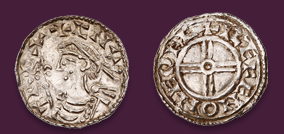
Auction: 4020 - Orders, Decorations, Campaign Medals & Militaria
Lot: 463
Naval General Service 1915-62, G.VI.R., one clasp, Palestine 1945-48 (P/JX126321 J. Harper D.S.M. P.O. R.N.), nearly extremely fine Estimate £ 350-400 D.S.M. London Gazette 12.4.1940, Able Seaman James Harper, H.M.S. Cossack, 'For gallantry and devotion to duty in the boarding of the Altmark. Seizure of the Altmark After the destruction of the German pocket-battleship Admiral Graf Spee in the River Plate in December 1939, the Royal Navy launched an intensive search for the 12,000 ton German supply ship Altmark. She had disappeared after the sinking of her parent ship, and was believed to be carrying some 300 British Merchant Navy prisoners. She avoided detection for six weeks, but finally on 15 February, it was reported that she was steaming south down the Norweigan coast and had passed Bergen. A force of six ships including the Destroyer H.M.S. Cossack, Captain P.L. Vian, had already left Rosyth with orders to sweep up the Norwegian coast with the object of catching enemy ships returning to Narvik. On the 16 February Captain Vian was told that his primary objective now was to intercept the Altmark. The next day the German ship, with two Norwegian escorts, entered Jossing Fiord. Captain Vian, following her in, demanding that the British prisoners be released, but was told by the Norweigan escorts that the German vessel had been inspected at Bergen, was unarmed, and had been given permission to use Norwegian territorial waters. The situation was politically delicate, as to use force only to discover that there were no prisoners on board would cause a diplomatic incident. The orders from London however were that the ship should be boarded and, if prisoners were found, she was to be seized in prize. At 10 p.m. Cossack moved up the narrow fiord. The thick ice meant the ship's boats could not be used. In a newspaper interview, one of the crew described how ' the Altmark shone her searchlight on us as we slowly crunched our way through the ice. Every man was tense with excitement. The boarding party was ready with rifles in hand. We kept our bayonets in the scabbards for the time being. As we neared her great bulk the Altmark suddenly lunged astern at us. Our skipper swung the ship sideways and the great tanker scraped the full length of the Cossack. Our searchlights were trained on her. With a tremendous spring, well over six feet in length, the officer in charge of the boarding party leapt aboard the Altmark. Others followed...The Altmark reversed its diesel engines quickly and made another attempt to ram us, this time stern first. She missed us and crashed on to the rocks. She was aground. Meanwhile an officer on the poop of the Altmark fired with a revolver upon the handful of boarders who had gained her decks. Then they opened fire with their rifles, fixed their bayonets, and charged.' The resistance was weak and quickly collapsed. It was found that not only were 299 prisoners on board, but that the ship was armed with both heavy and light machine guns. The inspection at Bergen, in the words of the official history, 'had, to say the least, been perfunctory', and this aspect of the incident led Churchill to refer to the 'tangle of one-sided neutrality'. There is no doubt however that though the Altmark incident, following on from the success against the Graf Spee, had caught the imagination of the British public, 'it was no more than a successful minor operation and was soon to be submerged by a flood of major catastrophes.' (The War at Sea 1939-45, Captain S.W. Roskill D.S.C, R.N., refers.)
Sold for
£420




